Puppetry, the Insular Art That Takes a Village
This week on HowlRound, we take a look at the many faces of American puppetry. Once again enjoying a resurgence in pop culture, puppet art's impact on our nation's culture is deeper than most would think. This series will take a look at the art form through the eyes of some of its most innovative and stalwart thinkers. Find the full series here.
The art of puppetry is alive and well in the United States and this summer it has gleamed brighter than ever in the puppet-rich state of Connecticut. With the National Puppetry Conference celebrating its 25th anniversary early this summer June 6–14 and the University of Connecticut’s Puppet Arts Program celebrating its 50th anniversary this year (and the director of the puppet arts program and one of my mentors, Bart Roccoberton, celebrating twenty-five years as the head of the program), it is only right that this year’s Puppeteers of America National Puppetry Festival was held in Connecticut at the University’s main campus in Storrs August 10–16. It is no wonder that you could throw a pebble and hit a puppeteer in the tri-state this summer. We are all the luckier for it.
As someone who is a graduate of the UConn Puppet Arts Program, a member of Puppeteers of America and a board member of UNIMA-USA (the American branch of the world puppetry organization), I would be remiss if I didn’t admit that for this puppeteer to do my work it takes a village. And I am proud to say that I am not alone. Many find puppetry in a most singular way. Think about it. The puppeteer is often hidden. They are in a booth by themselves or hidden from the audience by a screen. Or maybe they are toiling away in a workshop where they are releasing a figure from a piece of wood or sculpting a new form out fabric or clay. More often than not, they are alone. And while this alone time, this opportunity to create a magical world inside one’s head to be shared with a future audience is important as it is in any other form of entertainment, historically, many puppeteers do it on their own.
Then of course, there are the troupes; those large groups of artists where performers and artisans are groomed from a young age to work together and becomes masters of their craft. Another enviable way to work indeed.
The puppeteer is often hidden. They are in a booth by themselves or hidden from the audience by a screen. And while this opportunity to create a magical world inside one’s head to be shared with a future audience is important as it is in any other form of entertainment, historically, many puppeteers do it on their own.
But what if these two traditions were to come together? What if the lonesome, insular puppeteer “found their tribe,” as Pam Arciero, Artistic Director of the National Puppetry Conference often says during her welcome at the top of the conference? What if solo artists found a group to commune with and artists in groups found a way to access and explore their individual voices? This happens every year at the National Puppetry Conference and bi-annually at the National Puppetry Festival. The differences between the two gatherings are nuanced, but the experiences at each are very different.
The National Puppetry Conference (of which I proudly served as the coordinator of and then the associate artistic director for eleven years) is a highly competitive professional development conference and think tank for new ideas in the puppet arts. Artists come from all over the world and to date, we have hosted participants and guest artists from six of the seven continents in the world with Laura Purcell, a Tasmanian hybrid artist, holding the record for the artist traveling farthest (that we know of).
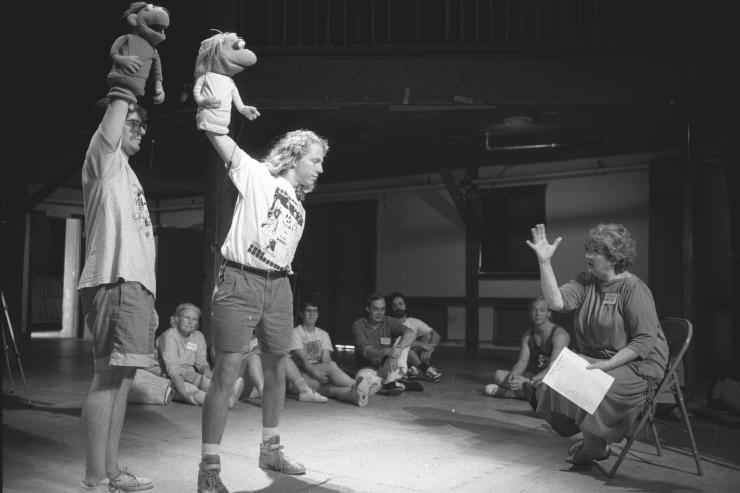
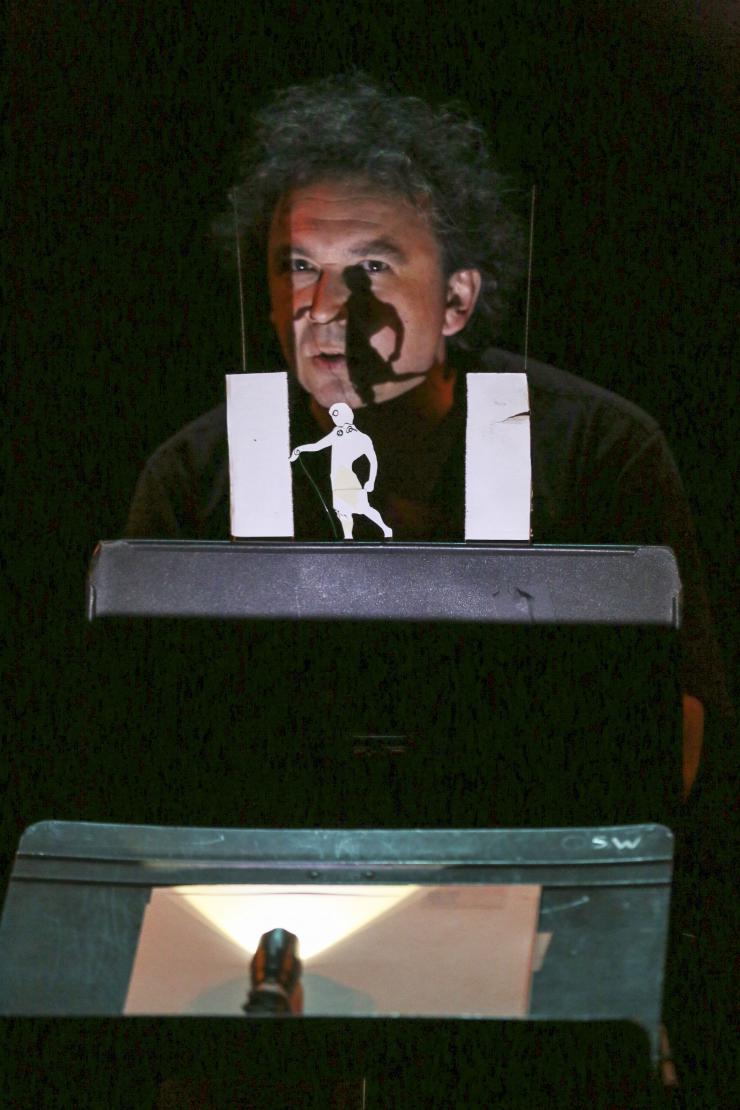
The Festival on the other hand is open to all, and as a programmer, I cheer their artistic committee for taking on such a monumental task. Can you imagine programming workshops, lectures, critical thinking sessions, film, and live theatrical events for puppeteers from around the country and around the world? The festival showcases finished works and teaches puppeteers of all levels who are interested in learning about the puppet arts. At last count there were puppeteers attending from forty-five of the fifty states. It is a wildly impressive venture. Many puppeteers have found their start with the P of A including Caroll Spinney, aka, the performer behind Big Bird on Sesame Street. And this year, Caroll will be back to inspire yet another generation of wildly creative and enthusiastic people and rejuvenating the spirits of those long invested in the craft.
The commonality between the two gatherings? Community. Celebration. Growth in skills and perhaps most important, a recharging and growth of the creative spirit.
Several years ago I had the pleasure of meeting and supporting one of my favorite puppet artists Bernd Ogrodnik at the National Puppetry Conference. Bernd was there developing a new piece for the National Theater of Iceland and was workshopping this piece with some very eager participants of varying skill levels. What I found in this man wasn’t just a tenacious teacher, but a clear and inquisitive storyteller. Watching Bernd hone a piece while simultaneously teaching manipulation skills to burgeoning puppeteers was like watching the Pied Piper of puppetry. It was invigorating! But that was not the most important part of this meeting. In the short time that we were together at the conference, a deep and lasting friendship formed. One of teacher to student quickly became one of peers. The following year at the National Puppetry Festival I saw Bernd do one of his solo shows live and I was overwhelmed. We talked a bit about what it took for him to put this show together—the hours, the years, the deeply vulnerable and intense process. Then he asked what I was working on and I pulled the ultimate bob and weave. People were watching us talk and I needed the real talk: that deep vulnerable and for me embarrassing conversation that you can only have in private with someone you trust. This wasn’t going to happen in front of all. When Bernd, in his special way, tried to leave the festival early without saying “goodbye,” I caught him and followed him out the door. We laughed pretty hard when Berndt said, “are you my puppet stalker.” “No” I said. “When’s your flight? I need to tell you what I am working on.” He looked at me and said, “come. We will walk.” As we walked down the path at Georgia Tech I told Bernt about a show that would eventually be called Zwerge. It is based on the true story of seven dwarves who survived Auschwitz. He stopped in his tracks and hugged me. He looked deep in my eyes and said, “trust yourself. This is going to be good. I know it. We should sit.” And we did. For hours we sat on the steps on campus talking, sharing, laughing, and crying. We watched sprinklers come on and off. People walking to the late night parties and then paring off and walking home. But we didn’t move. We just talked. A true recharging of the creative spirit.
What if solo artists found a group to commune with and artists in groups found a way to access and explore their individual voices? This happens every year at the National Puppetry Conference and bi-annually at the National Puppetry Festival.
There is another amazing thing about the puppet community that I learned both from the National Puppetry Festival and the National Puppetry Conference—the spirit of reciprocity that is steeped in tradition. Last festival a friend confided that there was a possibility that the National Festival might not have a museum that year. I would be lying if I said I kept my composure. How could we look to the future if we weren’t examining and honoring our past? How could the older generations be celebrated if we couldn’t see their work and how could the new generations be taught if all we were doing was talking about ourselves? Puppetry is a visual art form and the craft of building a puppet is an essential part of it. Happily there was an exhibit that year just as there was one again this year. And, like many, I could not wait to get to UConn to see it! And while there may not be a formal exhibit at the National Puppetry Conference, you can be sure that annually, Jim Rose will have his beautiful marionettes on display and for loan in our basement workshop. Jim Kroupa will have mechanisms out for people to take photos of and ask questions about. All of the rehearsal spaces are open to all participants and the mantle in Artistic Director Pam Arciero’s office is covered with photos of the puppeteers who have come before us inviting stories of these amazing people to be told. And they are.
As this summer revealed itself, puppeteers from all over the world are once again descended on the United States. They came prepared to celebrate an art form as old as humanity. To share, learn, and question. This year, the Friday night slot at the Puppeteers of America Festival at the University of Connecticut celebrated twenty-five years of the National Puppetry Conference with a one night only event, Late Night with Eugene O’Neill, co-hosted by Sonia Manzano, aka Maria of Sesame Street. The evening showcased work created at The O’Neill over the past twenty-five years complete with a live house band and Eugene O’Neill (in puppet form of course, performed by the incredible Tyler Bunch) behind the desk interviewing famous puppeteers who had a monumental influence on The O’Neill and the world of puppetry. Even the godmother of American puppetry, Allule Kurten took a seat on the couch. The spirit of the National Conference was shared with the larger puppetry community at the festival.
So, if you’re a theatre artist looking for a unique and loving community, my message is simple. Give puppetry a shot. We are a loving community that strives for excellence while creating unique world. We make the impossible possible and will welcome you to our “tribe.”

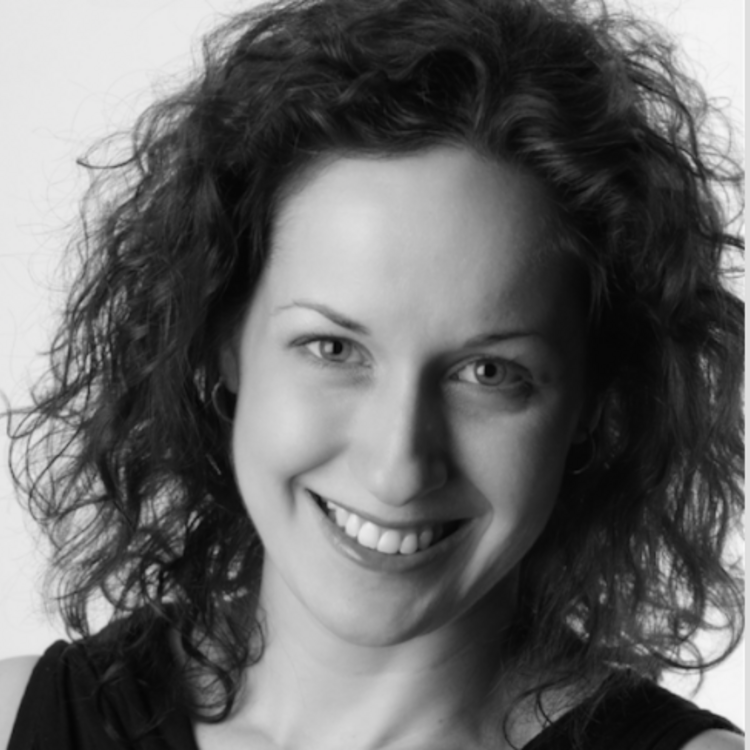
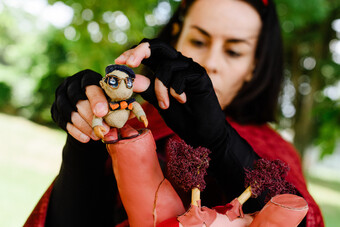

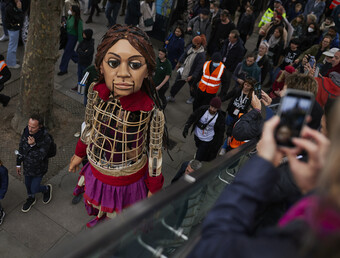



Comments
The article is just the start of the conversation—we want to know what you think about this subject, too! HowlRound is a space for knowledge-sharing, and we welcome spirited, thoughtful, and on-topic dialogue. Find our full comments policy here
That is incredible that they have actual conferences made out to honor puppetry. When thinking about stuff like Avenue Q and Jeff Dunham, I think of all of the backlash these things get on the internet. I also think about how underappreciated of an art it has to be. However, after reading the article and discovering that there are puppet conferences and even a department dedicated to puppetry in the University of Connecticut. I feel enlightened to know now that puppetry isn't as underappreciated as everybody makes it out to be on the internet. I will admit that Avenue Q is my favorite musical. Why, you may ask. Well, the answer is very simple, it has something childish perform over the top adult humor. It reminds me of shows such as South Park. In addition, when the puppeteer was mentioned to be hidden I thought to myself that it makes the show so much more fun in some aspects. It reminds me of cartoons in a way, like when I watch Family Guy or South Park. I can only be lost in the ridiculousness of the characters without thinking about the artist, until the end when I give the final verdict on whether I liked the episode or not. In conclusion, I enjoyed this article because it brought me back to all of the positives aspects and appreciation of.
I read this just as I welcome today Janie Geiser and Co's "FUGITIVE TIME" to The Yard (Chilmark, MV, MA). As a longtime producer of contemporary adult puppetry (or "object theater" as some artists now call it) at New York's Dance Theater Workshop, often in conjunction with the Henson Foundation's projects, I felt obligated to bring it along to The Yard as a complement to our dance programming. Before Janie, we brought in Dan Froot and Dan Hurlin's "WHO'S HUNGRY?," working with a coalition of producer/presenters around a theme of chronic hunger in New England. Even a new generation of children's work has come in courtesy of Sandglass Theater. So this renewed theater of puppets and objects, with its interdisciplinary reach into animation and media, visual design, tabletop and toy theatrics and choreography of the puppeteers, Bunraku and beyond, is here to stay on an island off the coast of America.
great piece